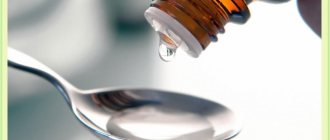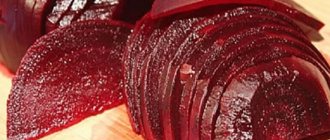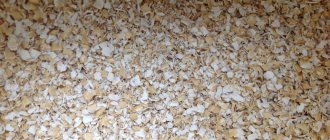Published 04/22/2019 · Comments: · Reading time: 4 min · Views: Post Views: 4,972
Stool retention often occurs in children under one year of age. In the first months of life, the functioning of all systems of the baby’s body develops and its adaptation to new conditions occurs. “Swings” in nutrition while the mother develops persistent lactation, and the adaptation of the baby’s digestive tract can lead to irregular bowel movements. This does not always indicate pathology - it is simply a stage of adaptation. Is it possible to give an enema to a newborn with constipation? Can. This is one of the safest methods to solve the problem.
An infant does not need any extra drug load. During a laxative enema, no medications enter the body. The method is based solely on mechanical influences.
The injected liquid softens hard feces, breaks it down, lubricates and gently stimulates the intestinal mucosa, activating peristalsis (natural contractions of the intestinal muscles). The complex of these effects leads to comfortable defecation.
Etiology of constipation
Constipation in infants can be caused by various factors:
- infection;
- lack of water (liquid) in the baby’s diet;
- poor nutrition of the mother;
- inflammatory reactions in the gastrointestinal canal;
- allergies to certain foods;
- Hirschsprung's disease;
- transition from breastfeeding to artificial feeding;
- deficiency of breast milk;
- changing milk formula;
- systematic stress;
- dehydration of the body;
- taking medications.
Clinical examination of the baby
When is an enema needed?
How to give an enema to a small child under one year old
A child under 3 months should poop at least 2-4 times a day. When a baby does not have stool for more than 2 days, this may indicate that he has constipation. Sometimes it happens that a baby completely absorbs mother's milk, so he may not have a bowel movement for 3-5 days.
If a baby does not have bowel movements, this is not a reason to panic. If the toddler develops well, is active, gains weight well and sleeps normally, then rare bowel movements are quite normal.
We can talk about intestinal dysfunction only when, in addition to constipation, the baby is diagnosed with other signs: lack of appetite, tearfulness, apathy, flatulence, abdominal pain. In this case, it is very important to pay attention to the condition of the stool. In infants, they should have a mushy shape with a yellowish tint. With constipation, stool is dark in color, hard, with a pronounced odor.
You can suspect the development of constipation in a baby based on the following signs:
- the child constantly cries and refuses food;
- when trying to poop, he grunts and strains a lot;
- hard feces;
- When palpating the abdomen, the child feels discomfort.
When constipated, children tuck their legs towards their tummy
Indications and contraindications
In fact, there are not many indications for giving an enema to young children, the main ones being the following:
- spastic colitis;
- constipation in newborns;
- digestive dysfunction, which leads to increased gas formation;
- intoxication of the body;
- inflammatory reactions in the intestines (microenemas with antibiotics and other antiseptic substances are prescribed);
- feverish condition.
An enema is not given in the following cases:
- suspicion of surgical pathology (intestinal volvulus, appendicitis, internal bleeding, pinched hernia, paraproctitis, rectal and anal fissures);
- the presence of inflammatory processes in the perineum, rectum and anus;
- rectal prolapse;
- congenital neoplasms in the gastrointestinal tract;
- early postoperative period.
Important! The temperature of the liquid for a cleansing enema should be from 26 to 37 °C. The attending physician will tell you how many procedures you need to undergo.
Cleansing and laxative enemas are performed for:
- Constipation in newborns.
- Spastic colitis.
- Digestive problems that lead to colic and increased gas formation.
- Hyperthermia at high temperature, fever and intoxication of the body.
- The need to perform other types of enemas after cleansing: for example, diagnostic or therapeutic.
The temperature of the cleansing enema solution should be from 30 to 38 degrees C.
The solution for a laxative enema for a newborn, especially with cramps and colic, can be oil or glycerin, as recommended by a doctor.
What types of enemas are there?
Microlax for newborns - how to use an enema for infants
Depending on the goals and technique of implementation, the following types of enemas are distinguished:
- Diagnostic. During this manipulation, contrast compounds are introduced into the child’s intestinal cavity for diagnostic purposes. Immediately after the procedure, an x-ray is taken.
- Cleansing. It does not require any special skills, so it can be done even at home. Most often, clean boiled water without any additives is used to carry out the procedure.
- Nutritious. It is performed to introduce some medications into the intestines. These can be nutrient solutions in case of impairment or inability to eat. A medicinal enema is given only after 20-30 minutes. after cleansing the intestines of feces.
- Oily. To prepare an oil enema, you can use different types of vegetable oils. The liquid temperature should be between 30 and 37 °C. A local pediatrician can tell you how to give an enema to a newborn at home.
- Siphon. This type of enemas is prescribed by a doctor only in cases of severe poisoning. It is performed in a medical facility under the supervision of medical staff.
Cleansing enema for a child
For unprepared parents, the procedure of enema for infants is always something creepy and scary. In reality there is nothing complicated about it. It is important to carry out the manipulation with maximum caution and calm.
At home, cleansing enemas can be performed in the absence of anxiety in the child and disturbances in his well-being. It is almost impossible to give an enema to a baby without outside help; it is better that 2-3 adults participate in this process.
A single enema does not always help. There may be a situation in which the procedure will need to be repeated. The main thing is to remember that the break between enema manipulations should be at least 6 hours.
Possible side effects
Doctors warn that carrying out the procedure in violation of the rules can lead to negative consequences. It is no coincidence that doctors allow enemas for young children in exceptional cases when other methods do not help. If parents doubt whether they can cope with the procedure, they should seek help from a local nurse or pediatrician.
Possible consequences if an enema is administered incorrectly:
- cracks, irritation or injury to the intestines;
- removal of beneficial microflora;
- the child is in pain;
- severe fear of the baby due to inept actions of adults;
- rupture of the mucosa and bleeding due to intestinal obstruction.
The pediatrician must explain to adults how often an enema can be given to a newborn and the dangers of breaking the rules. It is advisable for inexperienced parents to purchase the drug Microlax for safe and gentle bowel cleansing in children.
Step-by-step instruction
Vaseline oil and ointment for newborns
Before performing the procedure, you need to make sure you have all the necessary attributes:
- baby soap;
- cotton pads;
- clean oilcloth with a diaper;
- syringe with a rubber or silicone tip (volume no more than 60 ml);
- warm boiled water;
- Vaseline or cream.
Additional Information. All instruments and solutions used for performing an enema must be sterile. Before use, the pear is boiled for 25-30 minutes. Hands are washed thoroughly with soap. The volume of the enema should correspond to the age of the child.
The data is presented in the table.
Enema volumes according to age
| Amount of liquid, ml | Child's age |
| 10-25 | 1-2 months |
| 30-60 | 2-4 months |
| 70-100 | 6-9 months |
| 120-170 | 9-12 months |
| 200-250 | 12-24 months |
| 270-300 | 2-5 years |
| 350-400 | 5-9 years |
| 400-500 | over 10 years old |
Cleansing enema for constipation for newborns
In order to properly administer an enema to a baby, you need to perform the following steps:
- Measure the temperature of the enema solution.
- Remove air from the pear.
- Place the child on his left side, move his legs towards his stomach.
- Lubricate the anus and the tip of the bulb generously with Vaseline.
- Spread the buttocks apart with your fingers, then carefully insert the tip into the anus.
- The contents of the syringe must be released slowly.
- After introducing the solution, the tip of the bulb is smoothly pulled out of the rectum.
- The child’s buttocks are squeezed with your fingers and held for several minutes.
An enema can be given to a baby no more than once a week. Often after the procedure there is quite a lot of stool, so you need to prepare for this process in advance. You need to have the appropriate items on hand. The most convenient to use and safest for children are ready-made Microlax microenemas, which can be purchased in pharmacies.
Note. Microlax contains sodium lauryl sulfoacetate, sodium citrate, sorbitol solution, as well as excipients (sorbic acid, glycerin, water). Sodium citrate displaces water associated with feces, sorbitol ensures the flow of water into the large intestine, and sodium lauryl sulfoacetate helps dilute the intestinal contents.
To treat constipation in newborns, Microlax can be used from the first days of life. For infants, the tip is inserted only half the length, the contents of the tube are inserted completely. After a microenema, doctors recommend giving the baby a tummy massage in a circular motion in a clockwise direction. The question of how often Microlax enemas can be given to a newborn should be decided by the treating pediatrician.
Advice. You should not engage in self-diagnosis and self-medication.
If you suspect intestinal diseases, you should consult a doctor.
Composition of an enema solution for a baby
If your child still has constipation and you decide to give an enema, you need to answer the question: what solution will help a newborn baby? The simplest and least difficult would be a water enema. However, it must be taken into account that ordinary tap water cannot be used for such treatment.
The best would be special baby water, which is sold in pharmacies and supermarkets or distilled.
In order to facilitate the process of defecation, you can complicate the solution a little.
You can also make a solution with chamomile infusion. To do this you need to take 1 tsp. dried chamomile and brew it in 250-300 ml of water.
Before filling the pear, you need to filter and boil the water.
There is another medical solution that is suitable for enema for newborns and is familiar to everyone: saline solution NaCl 0.9%. It is used in hospital enema versions for constipation.
Salt by nature causes dehydration and irritation, and soap solutions contribute to the development of inflammation of the intestinal walls.
How often can you do an enema?
Experts recommend resorting to this procedure as rarely as possible and only in cases where alternative solutions are ineffective. It is best to carry out manipulation at least once a month.
Carrying out the procedure frequently removes beneficial bacteria from the body and can lead to injuries to the delicate mucosa. With prolonged use of enemas, it is difficult for the child’s body to cope with the excretion of feces: the walls of the intestines relax, feces move poorly towards exit, and constipation develops.
Microlax is the best remedy for constipation in children
Preventing constipation
It is much easier to prevent any problem than to treat it. To prevent constipation, you should adhere to the following recommendations:
- normalize the diet of mother and child;
- provide the optimal amount of water in the baby’s diet;
- before feeding the baby for 5 minutes. turn him over on his tummy;
- Do regular exercises with your child;
- massage the tummy;
- follow all doctor's recommendations;
- prevent the baby from overheating;
- If problems arise, contact your pediatrician immediately.
Even if you know how to give an enema to a baby, you should not forget about contraindications and possible side effects. If digestive problems do not disappear after performing an enema, you should make an appointment with your doctor. You cannot continue treatment with enemas on your own.
What should you not do when performing the procedure?
Before giving an enema to a newborn, adults should also calm down and:
- Do not exceed the required volume of the administered medicinal solution to avoid stretching the walls of the digestive canal.
- Avoid getting air into the rectum to avoid causing flatulence.
- Do not make rapid movements that could injure the baby’s soft tissues.
- Maintain the proper temperature of the solution so as not to increase the poisoning of the child’s body and not cause inflammation.
- Do not start the procedure without washing your hands and cleaning the syringe. An excited mother may forget about washing her hands and not wanting to contribute to the entry into the body of crumbs of infectious agents of a bacterial or fungal nature.
- Do not inject the solution quickly so as not to cause pain to the child.











